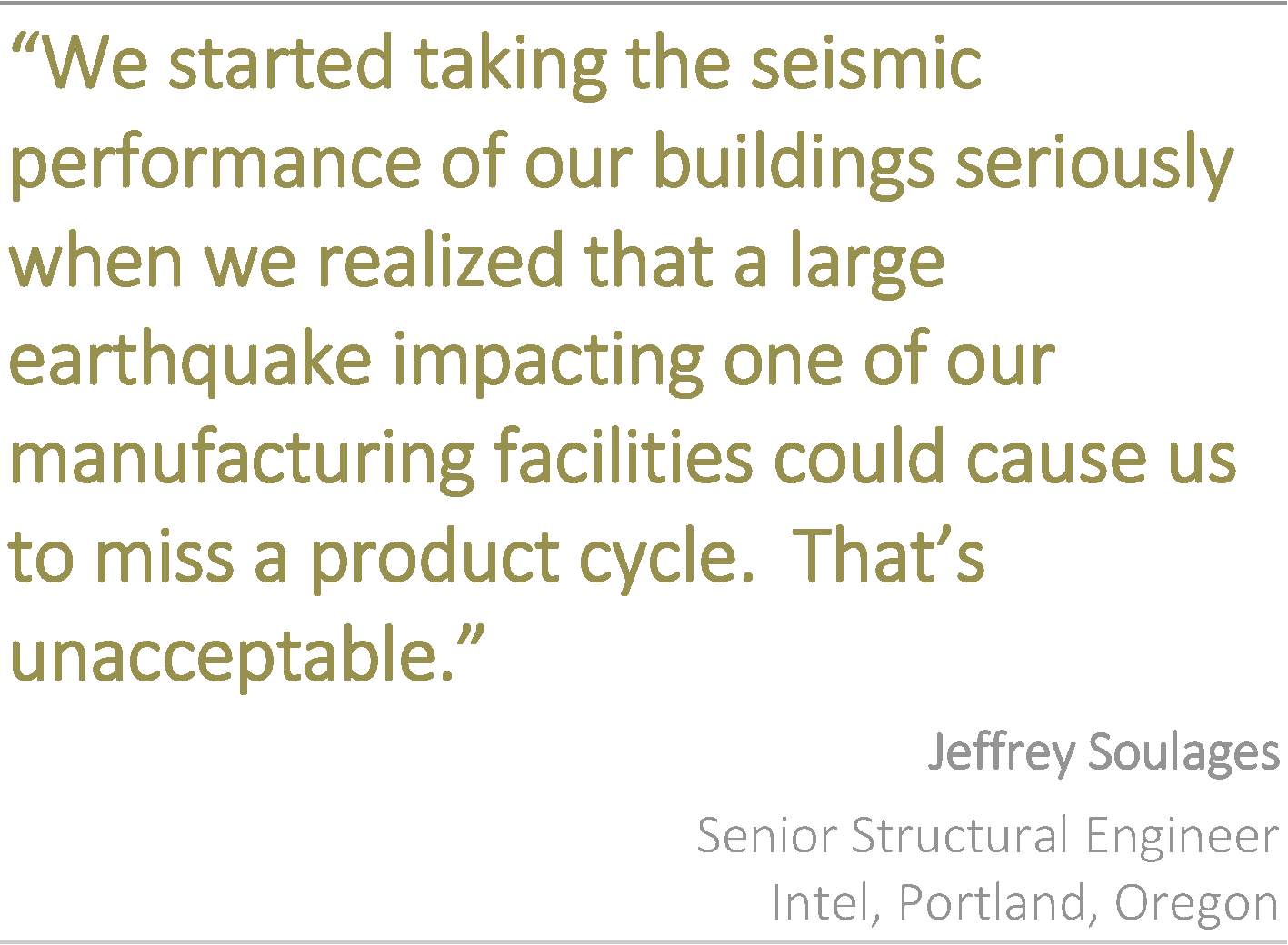Could your project benefit from new earthquake risk analysis techniques?
 After an earthquake, buildings designed to minimum building code criteria might be unusable and result in heavy financial losses. Is that acceptable for your building?
After an earthquake, buildings designed to minimum building code criteria might be unusable and result in heavy financial losses. Is that acceptable for your building?
For some buildings, safety is the critical concern when it comes to large earthquakes. But for other buildings—such as those that house time-critical business activities, need to be reoccupied quickly, or represent a significant financial investment—building owners and occupants want more.
Building codes in the United States provide minimum standards to ensure that new buildings are very unlikely to have deadly collapses in large earthquakes. However, a new building constructed in accordance with the code could still experience heavy damage, be unusable for an extended period, and require demolition. Past earthquakes show that the costs associated with the loss of use of a building during repair can exceed the value of the building itself. Owners and tenants may face major disruption and loss of revenue, potentially including the need to abandon the building and find replacement space.
New performance-based seismic engineering tools empower you to make decisions about earthquake risk that are right for you and your building.
Performance-based design and assessment methods enable detailed analyses of the wide-ranging consequences of earthquakes for new and existing buildings. This information can be used to weigh trade-offs when designing a new building, renovating an existing building, purchasing or leasing space, or making decisions to manage the risk of currently owned buildings. Decision-makers can evaluate options and make personalized risk decisions that reflect their needs, values, budget, and timeline. In consultation with knowledgeable architects, engineers, and other design professionals, performance-based analyses can help reduce the chance of injuries, minimize uncertainty and downtime, and reduce future financial losses.



